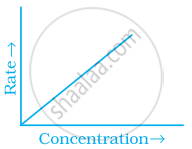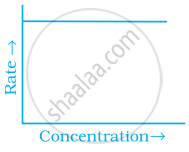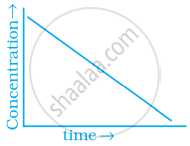Advertisements
Advertisements
प्रश्न
Consider a first order gas phase decomposition reaction given below :
\[\ce{A(g) -> B(g) + C(g)}\]
The initial pressure of the system before decomposition of A was pi. After lapse of time ‘t’, total pressure of the system increased by x units and became ‘pt’ The rate constant k for the reaction is given as ______.
पर्याय
`k = 2.303/t log p_i/(p_i - x)`
`k = 2.303/t log p_i/(2p_i - p_t)`
`k = 2.303/t log p_i/(2p_i + p_t)`
`k = 2.303/t log p_i/(p_i + x)`
उत्तर
The initial pressure of the system before decomposition of A was pi. After lapse of time ‘t’, total pressure of the system increased by x units and became ‘pt’ The rate constant k for the reaction is given as `k = 2.303/t log p_i/(2p_i - p_t)`.
Explanation:
Consider a first order gas phase decomposition reaction:
\[\ce{A_{(g)} -> B_{(g)} + C_{(g)}}\]
The initial pressure of the system before decomposition of A was Pi.
After lapse of time (t), total pressure of the system increased by x units and became 'Pt'.
In other words, the pressure of A decreased by x atom.
\[\ce{A_{(g)} -> B_{(g)} + C_{(g)}}\]
Initial pressure: Pi atm
Pressure after time t: (Pi – x) atm x atm x atm
Pt = (Pi – x) + x + x = Pi + x atm
x = Pt – Pi
PA = Pressure of A after time t = Pi - x = Pi - (Pi - Pi) = 2Pi - Pt
`k = 2.303/t log (["A"]_0)/(["A"])`
= `k = 2.303/t log p_i/(2p_i - p_t)`
APPEARS IN
संबंधित प्रश्न
A reaction is second order in A and first order in B.
(i) Write the differential rate equation.
(ii) How is the rate affected on increasing the concentration of A three times?
(iii) How is the rate affected when the concentrations of both A and B are doubled?
A reaction is first order in A and second order in B. Write the differential rate equation.
For a reaction R ---> P, half-life (t1/2) is observed to be independent of the initial concentration of reactants. What is the order of reaction?
Why molecularity is applicable only for elementary reactions and order is applicable for elementary as well as complex reactions?
Match the graph given in Column I with the order of reaction given in Column II. More than one item in Column I may link to the same item of Column II.
| Column I | Column II | |
| (i) |  |
|
| (ii) |  |
(a) 1st order |
| (iii) |  |
(b) Zero-order |
| (iv) |  |
Assertion: The enthalpy of reaction remains constant in the presence of a catalyst.
Reason: A catalyst participating in the reaction, forms different activated complex and lowers down the activation energy but the difference in energy of reactant and product remains the same.
Assertion: Rate constants determined from Arrhenius equation are fairly accurate for simple as well as complex molecules.
Reason: Reactant molecules undergo chemical change irrespective of their orientation during collision.
For a reaction \[\ce{Cl2l(g) + 2No(g) -> 2NaCl(g)}\] the rate law is expressed as rate= K[Cl2] [No]2 what is the order of the reaction?
For a first order A → B, the reaction rate at reactant concentration of 0.01 m is found to be 2.0 × 10–5. The half-life period of reaction.
Identify the order of reaction from the following unit for its rate constant:
L mol–1s–1
